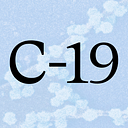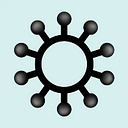Member-only story
Read Dr. Anthony Fauci’s Testimony
In a statement to the Senate, Fauci gave an update on vaccines and drugs for Covid-19
Anthony Fauci, MD, director of the National Institutes of Health and an expert on Trump’s coronavirus task force, is testifying before a Senate committee on the administration’s coronavirus response. In his introductory statement, Fauci said there are many possible vaccines being worked on and that researchers hope to develop more than one.
Read his full statement below.
Dr. Anthony Fauci: Thank you for giving me the opportunity to discuss with you today, the role the National Institutes of Health in research addressing Covid-19. The strategic plan that we have is four-fold. One, to improve a fundamental knowledge of the virus and the disease it causes. Next, to develop new point of care diagnostics. Next, to characterize and test therapeutics. And finally, to develop safe and effective vaccines.
First with regard to diagnostics. As you probably heard from Dr. Francis Collins last Thursday, the NIH has developed their Rapid Acceleration of Diagnostics program called RADx, with an award to that specific program, up to a half a billion dollars to support the development of Covid-19 diagnostics. It is a national call for innovative technologies that will be evaluated in…

